Our proud history
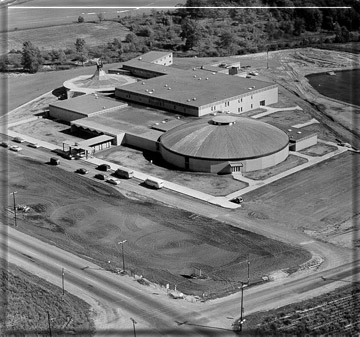
Northwest Ohio was a lush forest teeming with wildlife when the first Jesuits ministered in the Black Swamp region. The colonists had not yet declared independence from England when Fr. de Bonnecambe visited the Wyandot tribe along the Maumee River in 1749.
Other missionaries followed as the population in northwest Ohio grew and the city of Toledo began to emerge from the Black Swamp. In 1869, a group of Jesuits from the Buffalo Mission in New York established a pastorate at Old St. Mary's Church on Cherry Street. Once actively involved in parish ministry, the learned clerics at the church considered establishing a school. That dream was made possible in part by Otto von Bismarck, minister of the state of Germany who expelled German members of the Society of Jesus. These dispersed Jesuits arrived at the Buffalo New York Mission, eventually to travel to Toledo to establish a university.
Fifteen men formed the nucleus of a faculty. Property at the corner of Superior and Walnut, "the exclusive section of the city" was converted into a school, which also housed both faculty and students when St. John's opened in September, 1898. The Toledo Blade newspaper account called the event "one of the most colorful chapters in the city's educational progress."
Fourty-one students enrolled in the academy - the term for the high school - that first year. They grappled with German, Latin and Greek, as well as courses in mathematics, science, history and sociology. The young men were kept busy from early morning until late afternoon with the academic challenges presented by their gifted professors.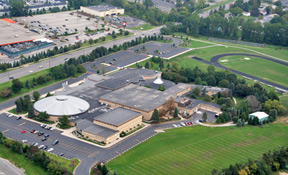
The student body nearly doubled the second year, and the first section of a high school building was constructed. A small barn at the rear of the property became the students' first gymnasium, and an adjoining playground served as a field for kick ball, later supplanted by the game of football. A baseball team was organized to compete against the old Central high school. Nearly the entire student body participated in the athletic activities. Sports had already begun to play an integral part in the St. John's tradition.
In 1902, the first students completed the four-year high school program. There were no graduation exercises, as the Jesuits didn't feel you had learned much until college was completed. Seventeen of the students who completed the academy enrolled as the college's first class and St. John's University was chartered.
Four years later, St. John's began an evening law school. Prestigious and popular, the graduates made an impact on the Toledo area. The three-year program, leading to a Bachelor of Laws degree, was offered until 1919.
In 1907, a new wing was added to the building to accommodate increasing numbers of students. The new building provided students with a 5,000-square-foot museum on the top floor and an observatory housing one of the first telescopes in northwest Ohio.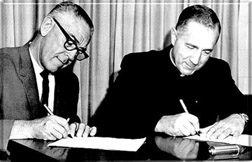
Athletics quickly gained a foothold. A gymnasium in the basement of the building was the beginning of the basketball program, which quickly became the school's major sport. The Westminster Auditorium served as the gymnasium and basketball became king.
The nickname of the college was the Saints -- the high school mascot was of all things, the Knights! The Saints took on Notre Dame University and beat them in 1921. Ten thousand people packed the gym that year. The news account read: "little old St. John's did the impossible in the halls of eternal athletic fame and went undefeated for 12 straight games over the best teams in the midwest." Beating Michigan, the University of Detroit, Dayton, Campion, St. Louis, Carnegie Tech -- the Saints were declared the Middle West Non-Conference Champions.
The growth of St. John's continued. In 1919, the Pomeroy home at Walnut and Huron Streets was purchased and remodeled to house the arts college. St. John's now included a four-year high school program and a four-year program that culminated in a Bachelor of Arts degree. Graduates of this program could then proceed to a Master's degree in arts and sciences. Alumni continued to assume prominent roles in the area, becoming leaders in the civic, professional and religious communities in Toledo.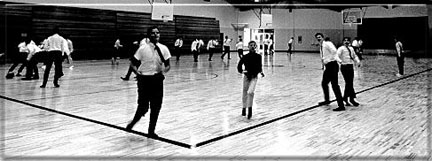
In 1922, the St. John's Endowment League was organized. Twenty-four acres of land "fronting on Bancroft street across from Ottawa Park were purchased with dreams of a seven-building campus and construction of an athletic field. Amid the challenges of the Depression years, students handled the day to day chores with dedication. Always at the core of St. John's were the larger lessons of life.
No one counted on the devastation caused by the stock market crash of 1929. The effect of the world's monetary woes slowly took its toll on dreams of school expansion. Tuition assistance needs far outweighed the amount of revenue being donated. The $100 tuition was fast-becoming an impossible sum for most students.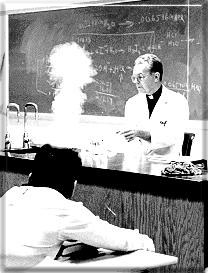
The Depression continued to erode the nation's vitality and in 1936, St. John's was forced to close. The school had made an indelible mark on the community. Of the 661 graduates of St. John's there were 100 clergymen, 104 attorneys, 67 doctors and dentists, 141 teachers and 19 social workers. A newspaper account read: "The Jesuits formed a nucleus of culture in the city which grew to permeate every walk of sound civic life." And those alumni never gave up the vision of a new St. John's Jesuit.
In the late 1950s, the need for another Catholic high school became apparent.. In 1963, Bishop Rehring invited the Jesuits to reestablish St. John's. Fr. Nicholas Gelin, a graduate of St. John's class of 1927, was charged with getting the new school "off the ground." He and a small contingent of Jesuits including Fr. Roman Weltin, Fr. Bob McAuley Fr. Dennis Schmitt and Br. John Sebian began the task with great joy. In June, 1964, the Ryan Road site was found "flat and poorly drained", requiring too much improvement to be an acceptable building site. Fr. Gelin wrote, "After investigating every available and adequate piece of land, we settled on 30 acres at the corner of Chicago Pike and Holland-Sylvania Road, as easily the best school site around. It is well elevated in scenic estate country, and yet readily accessible from all parts of the city."
Plans for the new St. John's were underway, and Msgr. Sawkins, the first student ever to register at old St. John's, came to bless the site and assist with the groundbreaking. But the work had just begun. The pastors and parishioners of Toledo had given the Jesuits $2 million, but the cost of construction, equipment and furnishings pushed the total needed to nearly $3 million. The alumni were asked to help raise the additional funds. The Men for Others responded and the new St. John's became a reality.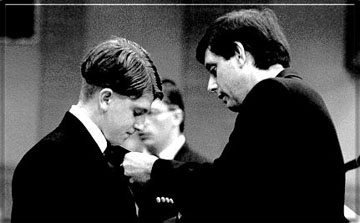
At the official opening Fr. Gelin said, "Today, St. John's begins its second springtime with a planting that we pray will yield a harvest comparable to the first." Traditions from the old St. John's were reflected in the new school. Although Greek wasn't part of the curriculum, a strong academic program stressing logic and communication set the standard. The new school opened its doors with the gym, auditorium and chapel still under construction. The class that entered September 13, 1965 ruled the roost. As the only students in the building that first year, the class of 1969 developed a high degree of self-assurance and camaraderie.
Although chartered as St. John's Jesuit High School, the school was always referred to as St. John's. And a mascot - Knights - had been preempted by St. Francis. After a student vote Titans reigned supreme.
The football team, playing a JV schedule, was undefeated that first year. Wrestling and basketball teams also began competition. With the addition of another crop of freshmen, St. John's revived the theatrical tradition with "Julius Caesar" the first production. The freshman class organized a food drive and a Christian volunteer program, the hallmark of Jesuit education, was begun. Fr. Weltin oversaw the volunteer program, an instant success among the students.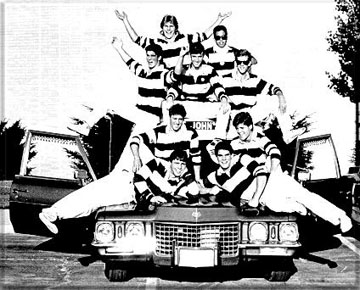
The slogan men for others was not yet coined, but the concept fit so well with the concern for others demonstrated through various service activities.
Early faculty arrivals Fr. Charles Sweeney, Andy Babula, Fred Beier, and Ron Miller grew up with the school and left a lasting imprint on thousands of graduates. Others popular in the early years were Fr. Hussey, eveyone's grandpa, and Leo LeCamp, a social activist so timely in those turnbulent times.
In 1969, the first class graduated from the new St. John's. The football team had placed second in the City Blue Division and the cross country team, formed just two years earlier, placed first in City, District and Regional competitions, finishing 11th in the state.
Fr. John Libens replaced Fr. Mott as principal. Fr. McAuley, the first principal of the school, began a seven-year stint as President. The cigar-smoking cleric was known for his aura of calm competence. His cheerful support made him a source of strength for faculty and students alike.
That same year, the Old Alumni Association established the Grant-in-Aid program, designed to assist needy boys with tuition through a school-work program. Tuition rose to $600 in 1972, so there was a growing need for financial aid. Before long, more than 100 students were helped with tuition. Soccer was added in 1972.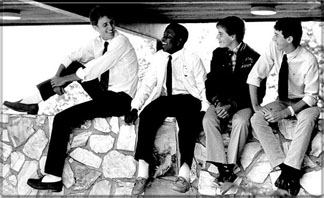
Technology rose to a new level in 1975 with a math department purchase of 35 pocket calculators. This was also the year that the senior project was introduced. With seniors shadowing professionals -- lawyers, architects, and engineers -- to gain a glimpse of life beyond college.
By the early '80s, building repairs were needed. Compounding capital demands was the declining number of Jesuits available to teach. Hiring more lay teachers forced tuition up, making financial assistance for many students a necessity. In 1984, Rick Sullivan became the first layperson to lead the school as principal. The reality of the changes in religious vocations came into clearer focus.
Development efforts were begun, with both parents and alumni fund-raising in earnest. A dinner auction was created, serving for many years as the main fundraiser for tuition aid. Another innovation to guide the school's future was the formation of a Board of Trustees.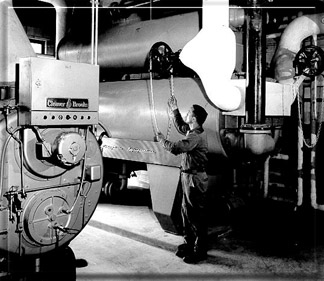
After 20 years of winning athletics, the Titans gained their first state championship as the tennis team won the title in 1985. And in 1987, the Titans flexed their athletic muscles with another state victory in tennis and a golf team state title.
While Fr. Ted Walters was president, in 1986, 24 acres of land were bought for a baseball diamond as well as football and soccer practice fields. Purchased from a bequest from an alumnus from the old school, some viewed the buy as a waste of money. The years proved that the purchase protected St. John's from the ever-growing encroachment of businesses and condominiums. And the athletic program benefited immeasurably from the additional land.
A spring musical production stepped into the annual calendar, becoming an instant success with the first show- "Once Upon a Mattress." With girls from local high schools participating, the experience gained great popularity. Under the direction of Fr. Ron Torina, the musicals grew in their professional flair.
Fewer Jesuits meant not as many men needed housing. So in the fall of 1991, the Jesuit living quarters were renovated freeing up space for a college counseling resource area to assist students in college placement. College counseling became a hallmark at SJ.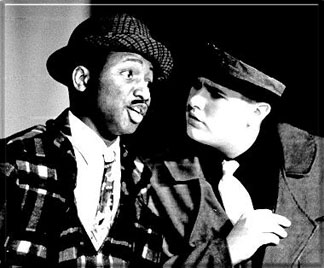
Enhancing the spiritual dimension of student development took new focus in the '90s. A growing Campus Ministry program with retreats planned for each class made an impact. A four-day senior retreat, "The Kairos," is the highlight.
Fr. Don Vettese became president in 1992. He called for a strategic plan for the school. Setting the Pace was the drive for $10 million in endowment, renovation and additions to the building and 54-acre campus. To ensure the future of St. John's, Fr. Vettese also built the Board of Trustees into more active body and formed a Board Council of area CEOs.
The school's connection to the worldwide mission of the Society of Jesus was highlighted with the decision in 1993 to use "Jesuit" in the school name. Although originally charted as "St. John's Jesuit," the use of the word in the title was seen as novel.
The '90s saw Christian volunteering increase with an annual trip to Appalachia and two overseas experiences. The Dominican Republic and Guatemala were additions to the service opportunities.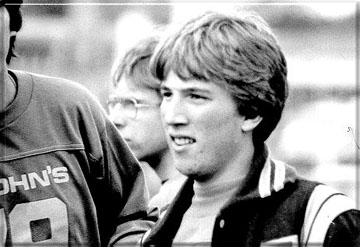
Titan Athletics stepped into a new arena in the '90s. Football made it into the state playoffs for the first time and, in 1992, Coach Ed Heintschel, one of the winningest coaches in Ohio basketball, and the basketball team journeyed to Columbus and finished as the state semifinalist.
Bonfires, pep rallies, senior hallway, the Promethean, the Cavalier, and athletics were the mainstays of student life. But the '90s ushered in new demands. An admissions department was added to help spread the good news about St. John's Jesuit. An innovative program meant to attract qualified minority students, Toledo 2020, was another new outreach.
Toledo 2020 boasts scores of successful graduates. Today, the program keeps SJJ consistent with the international Jesuit mission of a preferential option for the disadvantaged.
Carl Wagner became the first alumnus to serve as principal in 1993. Today, Joe Cordella serves as principal.
In 1998, the $3 million Iott Center opened with a new TV studio, music technology lab, publication offices, a tiered computer lab with distance learning capabilities, and an expanded library. The Chapel of St. John Berchmans has been expanded and renovated. The Lyden Center, a well-utilized fitness center, and Lyden Field, a state-of-the-art track and turf athletic complex, are stellar additions. The McQuade Theater and Sawicki Family Music Center are significant investments in the arts.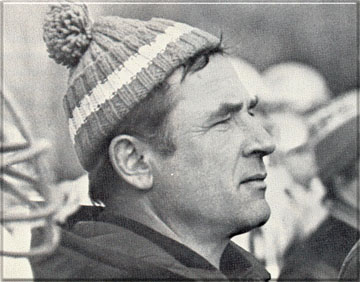
In 2004, the SJJ Academy opened with 100 7th and 8th grade students and has continued to win impressive awards and showcase student growth. In 2006, a sixth grade was added to the Academy to fulfill a true middle school model. Principal of the Academy is Dr. Bryon Borgelt.
Academically, St. John's Jesuit leads the area in its number of National Merit Scholars and Honorees over the last decade. Graduates are offered millions in college scholarships and grants. Donors have helped create an endowment that yields funds given annually in tuition assistance. More than 70 percent of the student body receives need-based financial aid, as SJJ provides its students with more financial aid than any other school in Northwest Ohio.
Donors giving time, talent and treasure supply the lifeblood of St. John's Jesuit. Alumni, parents and friends of the school, as well as corporate partners and foundations, who believe in the work we do, give strength to our mission.
We are blessed with a 100-year history of developing young men in conscience, competence and compassion. Students are molded and guided into men for others, becoming leaders, serving the needs of families, community and church. Alumni make lasting contributions in fields as diverse as medicine and marketing, education and engineering, crime fighting and counseling. We are grateful that so many of our graduates take seriously their call to volunteer in church and community.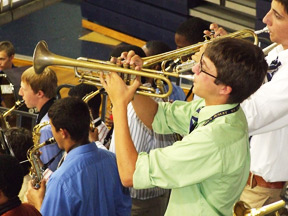
The Jesuits, in accordance with their centuries-old traditions, have educated and inspired their students through academics, the arts, athletics and spirituality.
St. John's Jesuit continues on "ad maiorem dei gloriam" - for the greater glory of God.
Written by Christine Alexander
Copyright 2009 St. John's Jesuit